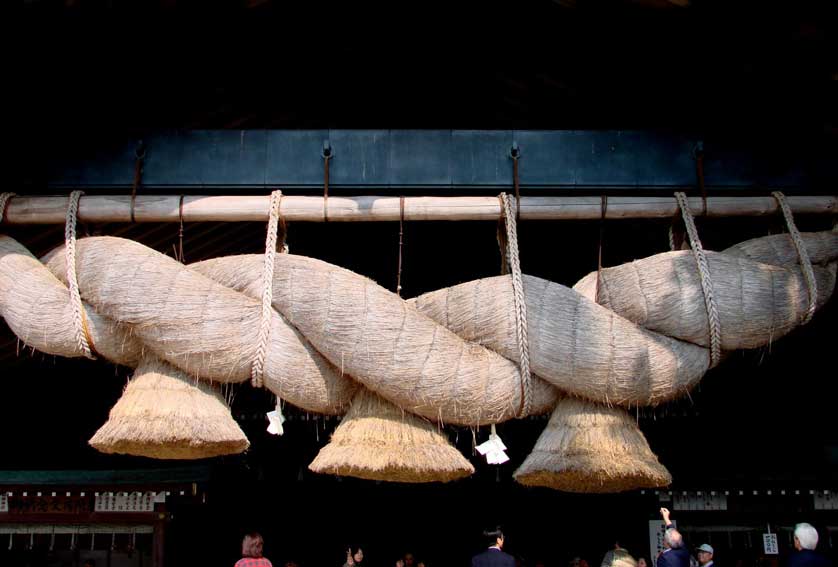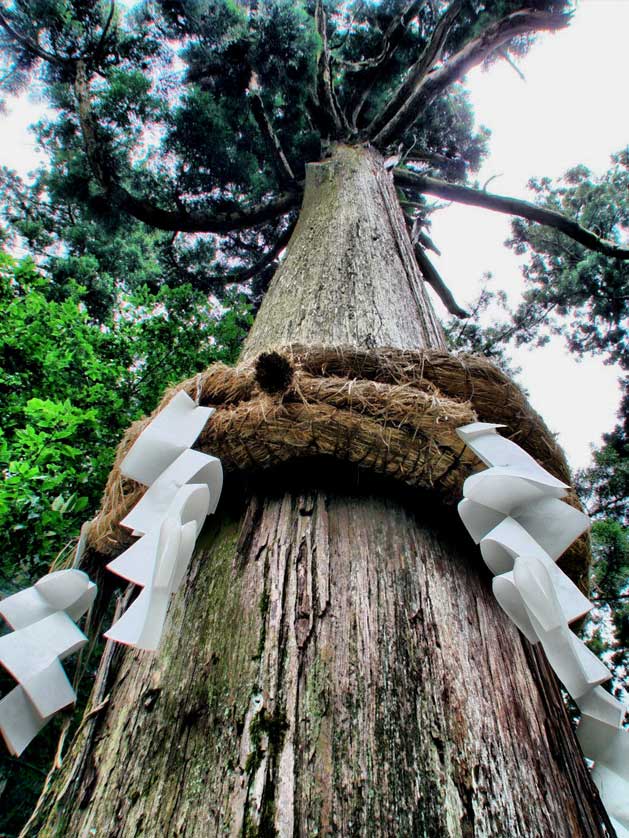Shimenawa: The Sacred Ropes of Japan and Their Significance in Shinto
The Origins and Mythology Behind Shimenawa
The origins of shimenawa can be traced back to Japanese mythology. One legend tells of the sun goddess Amaterasu hiding in a cave after a quarrel with her brother Susanoo, plunging the world into darkness. To lure her out, the other gods hung a sacred rope called ama-no-nuboko across the cave entrance, symbolically sealing it off. This rope is considered a prototype of shimenawa.
An alternative origin story from the Izumo region involves the kami Susanoo instructing people to string ropes along roads to ward off disease. This tale provides another possible explanation for the development of shimenawa as boundaries between the sacred and profane realms.
The Different Types and Decorations of Shimenawa
Shimenawa come in various shapes and sizes, ranging from a few centimeters to several meters long. They are often adorned with different decorations that carry symbolic meanings:
Shide (紙垂): Zigzag-shaped paper streamers representing purity and warding off evil spirits
Daidai (橙): Bitter oranges symbolizing prosperity and good fortune
Pine twigs: Evergreen boughs signifying longevity, renewal, and the presence of kami
One of the most impressive examples is the largest shimenawa in Japan at Izumo Taisha Shrine in Izumo, Shimane Prefecture. Measuring 13.5 meters long and weighing 4.5 tons, it is made by a team of 800 people and replaced every 6-8 years.
The Spiritual Significance and Uses of Shimenawa in Shinto
In Shinto, shimenawa serve several important spiritual functions:
- Marking yorishiro (依り代) - objects inhabited by spirits (kami) such as certain trees and rocks
- Warding off evil spirits and purifying ritual spaces for ceremonies
- Use in festivals like the Mountain Opening Ceremony and matsuri (Shinto festivals) like the Hadaka Matsuri (Naked Festival)
- Worn by sumo wrestlers of the highest rank (yokozuna) as living yorishiro
The ropes demarcate a threshold between the mundane world and the sacred realm of kami, creating a purified space for worship and communion with the divine.
Related Sacred Ropes and Objects in Shinto
In addition to shimenawa, Shinto practices incorporate other sacred ropes and ritual implements:
- Heihaku (幣帛): Wooden wands with shide paper or cloth streamers used in purification rituals
- Himorogi (神籬): Sacred spaces demarcated by shimenawa, often enclosing a tree or rock as a temporary altar
- Torii gates: Entrance gates to Shinto shrines frequently decorated with shimenawa
These objects work in harmony with shimenawa to create a sacred landscape and facilitate communication with kami.

Ancient trees and trees with legends associated with them will be marked sacred by having a shimenawa wrapped around them.
The Production and Materials of Shimenawa
Traditionally, shimenawa were made from hemp fiber, but today they are more commonly crafted from rice straw, an abundant byproduct of rice farming in Japan. The production process involves:
- Harvesting and drying the rice straw
- Selecting high quality stems and treating them with steam
- Twisting and braiding the straw into thick ropes
- Optionally decorating with shide, daidai, or pine
Specialized artisans and farming communities, including some in Taiwan, are involved in the production and export of shimenawa materials. The craft requires skill and dedication to create these beautiful and symbolically potent ropes.
In conclusion, shimenawa are much more than simple ropes – they are powerful ritual objects that connect the human and divine realms in Shinto. By understanding their origins, types, uses, and production, we gain a deeper appreciation for these sacred ropes and their enduring role in Japanese culture and spirituality. So the next time you spot a shimenawa at a shrine or sacred site in Japan, reflect on the profound symbolism and age-old traditions woven into each twist of rice straw.
Shimenawa are large ropes made of rice straw or hemp commonly seen at Shinto shrines, torii gates, and sacred landmarks in Japan. They play an important role in Shinto, dividing the sacred space where gods (kami) are enshrined from the profane outside world. This article will explore the origins, types, uses, and spiritual significance of these intriguing ritual objects.








